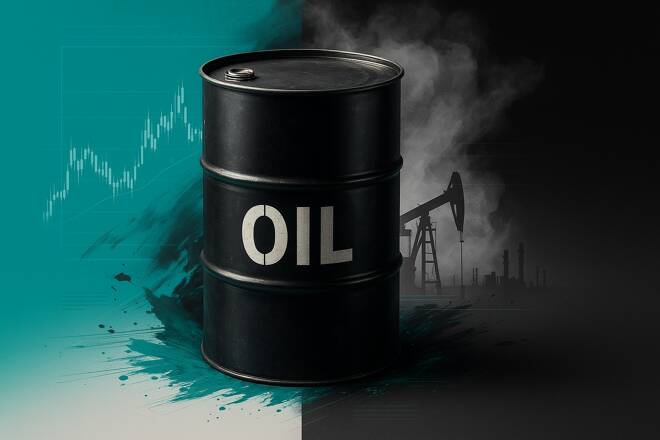Advertisement
Advertisement
Oil and Natural Gas Technical Analysis: Crude Holds Below Resistance as Gas Builds Support
By:
Oil faces pressure from bearish technicals, while natural gas exhibits a bullish outlook, supported by strong fundamentals and improving forecasts for 2025.
WTI crude oil (CL) prices are consolidating in a tight range below $60 following a sharp decline in U.S. drilling activity. The chart shows that U.S. crude oil rigs dropped to 407 on November 28, down from 419 the previous week. Moreover, crude oil rigs have averaged 499.17 from 1987 to 2025. They reached an all-time high of 1,609 in October 2014 and a record low of 98 in August 1999.
This drop marks the first overall decline in the rig count in four weeks. It highlights a cautious stance among energy firms amid subdued prices. With the total oil rig count now at its lowest level since September 2021, supply growth is expected to slow. If global demand remains steady or rebounds, this could tighten oil markets.
The drop in rig activity reflects a broader industry trend: energy firms are prioritizing shareholder returns over aggressive production. Rig counts fell by roughly 5% in 2024 and by a deeper 20% in 2023. Companies reduced capital spending and shifted their focus toward debt reduction and dividend payments.
Despite this pullback, the EIA still anticipates a rise in crude oil production. Output is projected to increase from a record 13.2 million bpd in 2024 to 13.6 million bpd in 2025. However, with fewer rigs in operation, this growth may depend heavily on productivity gains and high-performing wells, which could limit future output expansion.
On the other hand, the natural gas (NG) sector tells a different story. Despite weak prices in 2024, the EIA expects a 58% rise in gas prices in 2025. These expectations will likely encourage increased drilling activity. Gas output is projected to grow to 107.7 bcf/d, up from 103.2 bcf/d in 2024. This signals a more bullish outlook for natural gas than for oil in the coming year.
WTI Crude Oil (CL) Technical Analysis
The oil market shows a strongly negative long-term price structure, as it has broken below a symmetrical triangle pattern. This triangle is similar to the one formed between 2011 and 2014. This breakdown has created sustained bearish pressure on a long-term basis. A decisive break below the $55 region could trigger a sharp decline in oil prices.
This bearish pressure is also evident on the 4-hour chart, which shows the price declining below the $62 level and trading below the red dotted trendline. A break below $55 is needed to trigger a significant drop in the oil market. However, a breakout above $65.50 would invalidate the bearish setup and signal further upside potential.
Natural Gas (NG) Technical Analysis
The daily chart for natural gas shows a strong bullish price formation near the long-term support around the $2.60 region. Following this formation, the price surged to test resistance at $4.50 and has since consolidated within the red zone. This consolidation has reinforced the bullish outlook, and a breakout above $4.70 could trigger a strong rally in natural gas prices.
This is a strong bullish formation, and the $4.70 resistance is clearly visible on the 4-hour chart. The price is consolidating just below this level, forming a bullish setup. A breakout above $4.70 could trigger an explosive move in natural gas prices, initiating another rally in the market.
US Dollar Index (DXY) Technical Analysis
The daily chart for the U.S. Dollar Index shows that it failed to break above the 100.50 level and continues to trend lower in the short term. The index is trading below the 200-day SMA, indicating continued bearish momentum. A break below the 99 level is needed to trigger the next leg down in the index.
The 4-hour chart for the U.S. Dollar Index shows the formation of a double top pattern at the 100.50 level, indicating negative price action. A break below the neckline at the 99 level would trigger a strong drop in the index. A sustained move below the 98 level would confirm bearish momentum and signal further downside in the U.S. Dollar Index.
About the Author
Muhammad Umairauthor
Muhammad Umair is a finance MBA and engineering PhD. As a seasoned financial analyst specializing in currencies and precious metals, he combines his multidisciplinary academic background to deliver a data-driven, contrarian perspective. As founder of Gold Predictors, he leads a team providing advanced market analytics, quantitative research, and refined precious metals trading strategies.
Advertisement
